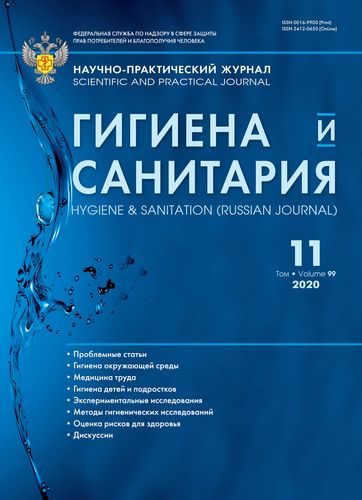Topical issues of the use of territories of enterprises in sanitary protection areas. Commentary to article: May I.V., Vekovshinina S.A., Kleyn S.V., Nikiforova N.V. Methodical approaches to the substantiation of accommodation of the object for food products in the boundaries of sanitary-protective zones of enterprises of other lines of the industry. Gigiena i Sanitariya (Hygiene and Sanitation, Russian journal). 2020; 99 (11).
- Authors: Sabirova Z.F.1
-
Affiliations:
- Centre for Strategic Planning and Management of Biomedical Health Risks of the Federal Medical Biological Agency
- Issue: Vol 99, No 11 (2020)
- Pages: 1315-1317
- Section: DISCUSSIONS
- Published: 24.12.2020
- URL: https://rjraap.com/0016-9900/article/view/638482
- DOI: https://doi.org/10.47470/0016-9900-2020-99-11-1315-1317
- ID: 638482
Cite item
Full Text
Abstract
In recent years, a broad interest has been aroused by a range of issues related to the possibility of placing regulated objects in “the areas with special conditions for the use of territories.” May I.V. with co-authors devoted their article to the methodological aspects of the location of the production of juices and non-alcoholic products in the sanitary protection zone of other industries. The work is relevant both in theoretical and practical terms.
The general algorithm for assessing the safety of the location of food production in the sanitary protection territory is logical and clear. The material is presented from a modern standpoint, taking into account the latest regulatory documents. But it is not fully confirmed by the results of their own research on a specific example. Exceeding the standards for air pollution by two substances indicates the lack of guarantee for the quality of the products used in the population’s nutrition. Moreover, the food company is also a source of environmental pollution. And therefore, on the one hand, it can increase air pollution in the area of its location. On the other hand, as a regulated object, it needs to organize its sanitary protection areas. The authors no considered this aspect of the work.
About the authors
Zulfiya F. Sabirova
Centre for Strategic Planning and Management of Biomedical Health Risks of the Federal Medical Biological Agency
Author for correspondence.
Email: zsabirova@cspmz.ru
ORCID iD: 0000-0003-3505-8344
MD, Ph.D., DSci, Professor, Leading Researcher, Department of Environmental Hygiene, Centre for Strategic Planning and Management of Biomedical Health Risks of the Federal Medical Biological Agency, Moscow, 119121, Russian Federation.
e-mail: ZSabirova@cspmz.ru
Russian FederationReferences
Supplementary files









